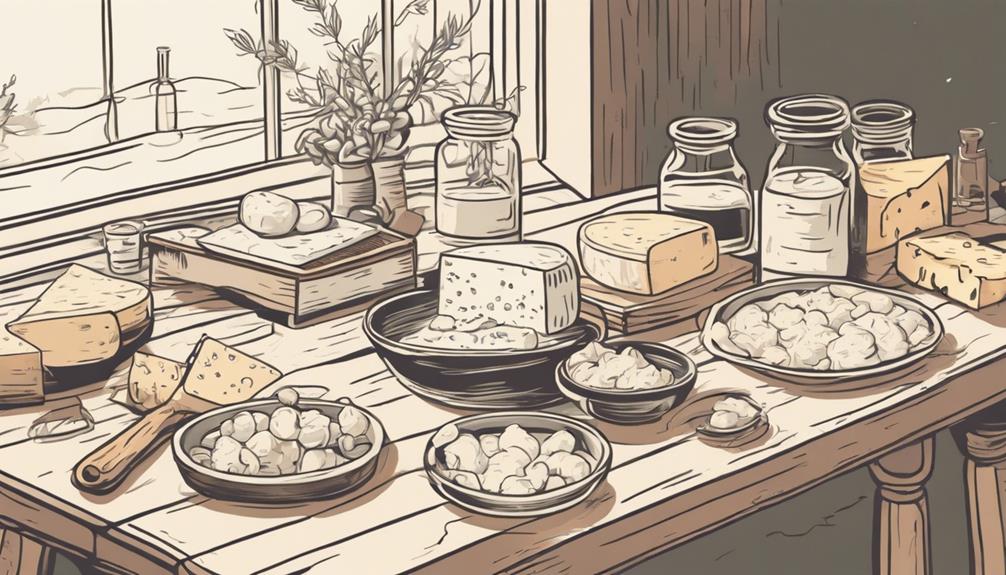How To Become More Self-Sufficient Without Starting a Full-Blown Farm…
Want to start preserving your harvest, making your own soap, or building a backyard root cellar — but not sure where to begin? “Homesteading Advice” gives you instant lifetime access to 35+ practical homesteading books on food preservation, veggie gardening, DIY natural cleaning products (save over $250 per year with this skill alone), brewing, off-grid energy, and a whole lot more…
Click Here To Check It Out Now!
“I’ve been making cheese for a few months now and am starting to notice that sometimes the texture of my cheese isn’t quite right. I’m trying to figure out if it’s my rennet-to-starter culture ratio that’s causing issues. Could you provide some tips on how to balance rennet with starter cultures for the best cheese texture? Thanks, William, Boulder, USA.”
How Do You Balance Rennet With Starter Cultures For Optimal Cheese Texture?
Good question, William! Finding the right balance between rennet and starter cultures is key to achieving that perfect cheese texture. Let’s break this down together and make sure your cheeses turn out just the way you want them.
Understanding Rennet and Starter Cultures
To start off, let’s clarify what rennet and starter cultures are. Rennet is an enzyme that helps coagulate milk, forming the curd that will become cheese. Starter cultures are bacteria that ferment lactose into lactic acid, which influences the flavor, texture, and aroma of the cheese.
Why Balance is Important
The balance between these two ingredients can make or break your cheese. Here’s why:
- Texture: The right balance ensures that your cheese has the desired texture, be it soft, firm, or crumbly.
- Flavor: Improper balance can lead to off-flavors due to incomplete fermentation or over-acidification.
- Maturation: The aging process relies heavily on the initial balance of rennet and cultures for the cheeses to mature properly.
Steps to Balance Rennet and Starter Cultures
So how do you achieve that balance? Let’s go through some detailed steps.
Choosing the Right Type of Rennet
There are several types of rennet available:
- Animal Rennet: Derived from the stomachs of ruminant mammals. It’s suitable for most cheeses and provides a consistent texture.
- Vegetable Rennet: Suitable for vegetarians. It’s derived from certain plants and molds but might result in a slightly different texture.
- Microbial Rennet: Produced through the fermentation of fungi or bacteria. It’s an alternative for vegetarians and people with specific dietary restrictions.
For someone starting out, animal rennet is often recommended due to its reliability and predictability.
Choosing the Right Starter Culture
Starter cultures come in various forms:
- Mesophilic Cultures: Best for cheeses aged at lower temperatures, like Cheddar and Feta.
- Thermophilic Cultures: Suitable for cheeses aged at higher temperatures, like Parmesan and Mozzarella.
Select a culture based on the type of cheese you’re aiming to make. This will significantly influence the cheese’s texture and flavor.
Determining the Correct Ratios
Getting the ratio right involves a bit of trial and error. As a starting point:
- Use about ¼ teaspoon of rennet per gallon of milk for most cheeses.
- For starter cultures, follow the package instructions, but generally, ? teaspoon per gallon of milk is a good starting point.
Adjust these ratios slightly based on observations during your cheese-making process.
Observing Coagulation and Curd Formation
Monitor the milk’s coagulation closely:
- After adding rennet, watch for the milk to begin setting. This should take between 30 minutes to 1 hour.
- If it sets too quickly or too slowly, adjust the rennet amount next time.
The curd should be firm but not overly hard. A soft, weak curd might indicate too little rennet or too much acid from cultures.
Examples of Successful Ratios
Using Cheddar as an example:
“William, if you’re making a Cheddar, try using ¼ teaspoon of rennet per gallon of milk, and ? teaspoon of mesophilic starter culture. Adjust based on the curd’s firmness and the texture of the resulting cheese.”
Troubleshooting Common Issues
Sometimes things go wrong, and it’s important to know how to troubleshoot:
- Soft Curd: Increase the rennet slightly or reduce the starter culture. Also, ensure the milk’s temperature is optimal before adding rennet.
- Hard, Brittle Cheese: Decrease the rennet or increase the starter culture slightly to slow down coagulation.
- Off-flavors: Often due to over-acidification. Adjust the starter culture downward slightly or ensure better temperature control.
Final Thoughts…
William, balancing rennet with starter cultures is both a science and an art. Your cheese-making journey will be full of learning experiences, but don’t get discouraged. With each batch, you’ll get closer to understanding the optimal balance for your specific conditions and ingredients. Thank you for sending in such a great question, and happy cheese making!

